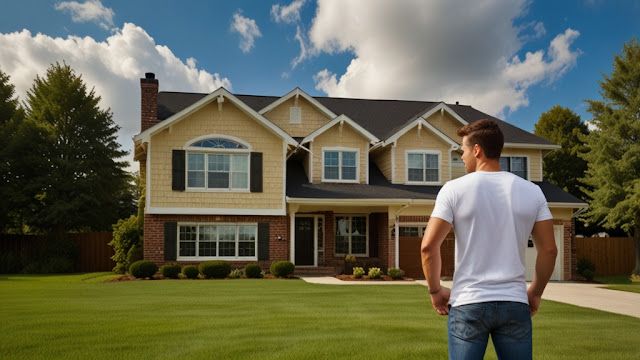What Does Home Insurance Cover?
Home insurance is one of the most essential types of coverage for homeowners, providing financial protection in case of unexpected events. But what exactly does home insurance cover? In this comprehensive guide, we’ll break down the key areas that home insurance typically covers and explain why it’s important to ensure you’re adequately protected.
Whether you’re a first-time homebuyer or a seasoned homeowner, understanding the scope of your home insurance policy can help you avoid surprises when the unexpected happens. Let’s dive into the details of what home insurance covers so you can have peace of mind.
Key Areas Covered by Home Insurance
Dwelling Coverage
The most fundamental part of home insurance is dwelling coverage, which protects the structure of your home. This includes the walls, roof, and foundation, ensuring that repairs or rebuilding costs are covered in the event of damage from covered perils like fire, windstorms, and vandalism.
Personal Property Coverage
Your home insurance doesn’t just protect the structure of your home—it also covers your personal belongings. Whether it’s furniture, electronics, or clothing, personal property coverage helps replace or repair items that are damaged or stolen.
Liability Protection
Liability protection is a key part of home insurance that covers you in case someone is injured on your property. If you’re found responsible, home insurance can help cover medical bills, legal fees, and even damages awarded in a lawsuit.
Additional Coverages and Options
Other Structures Coverage
If you have structures on your property that aren’t attached to your home, like a shed, fence, or detached garage, these can be covered under “other structures” coverage. This ensures that repairs or replacements for these structures are included under your policy.
Loss of Use Coverage
Loss of use coverage, also known as additional living expenses (ALE), kicks in when your home is uninhabitable due to a covered peril. It covers the cost of temporary accommodations, meals, and other living expenses while your home is being repaired or rebuilt.
Medical Payments to Others
Medical payments coverage offers protection if someone is injured on your property, but it differs from liability coverage. It’s meant to cover minor injuries and medical expenses without needing to prove you were at fault.
Common Exclusions in Home Insurance Policies
Flood Damage
One of the most significant exclusions in a standard home insurance policy is flood damage. If you live in a flood-prone area, you’ll need to purchase a separate flood insurance policy to cover damages caused by flooding.
Earthquake Damage
Similar to flood damage, earthquake damage is typically excluded from standard home insurance policies. If you’re in an area with seismic activity, you may need to buy additional earthquake insurance.
Wear and Tear
Home insurance is designed to cover sudden and accidental events, not general wear and tear. Routine maintenance, aging, and general deterioration of your home are not covered under a typical home insurance policy.
Table Breakdown: Key Home Insurance Coverage Areas
| Coverage Type | What It Covers |
|---|---|
| Dwelling Coverage | The structure of your home, including walls, roof, and foundation. |
| Personal Property | Your personal belongings, such as furniture, clothing, and electronics. |
| Liability Protection | Covers legal expenses and medical bills if someone is injured on your property. |
| Other Structures | Detached structures like sheds, fences, and garages. |
| Loss of Use | Additional living expenses if your home is uninhabitable due to covered damage. |
FAQs About What Home Insurance Covers
1. Does home insurance cover natural disasters?
Standard home insurance covers certain natural disasters like windstorms and hail, but it typically excludes events like earthquakes and floods.
2. Does home insurance cover mold?
Mold is usually not covered unless it results from a covered peril, like water damage from a burst pipe. Routine mold caused by high humidity may not be covered.
3. Are theft and vandalism covered?
Yes, theft and vandalism are generally covered by home insurance, as long as the event is sudden and accidental.
4. Will home insurance cover my swimming pool?
Home insurance may cover damage to your swimming pool, but liability coverage for accidents in or around the pool can vary, so check with your provider.
5. Does home insurance cover roof damage?
Roof damage caused by covered perils like hail or wind is typically covered, but wear and tear from aging may not be.
6. Can I increase my coverage limits?
Yes, most home insurance policies allow you to increase coverage limits or add endorsements for specific high-value items like jewelry or artwork.
7. Is water damage covered by home insurance?
Water damage is covered if it’s sudden and accidental, like a burst pipe. However, damage from flooding or gradual leaks is usually not covered.
8. What about pet damage?
Damage caused by pets, such as chewing or scratching, is typically not covered under home insurance policies.
9. Does home insurance cover fire damage?
Yes, fire damage is a common peril covered by most standard home insurance policies.
10. Will my home insurance cover my home office?
Home insurance may cover limited personal property in your home office, but you may need additional coverage for business equipment or liability.
Conclusion
Understanding what home insurance covers is crucial for protecting your property and finances. From dwelling coverage to liability protection, having the right policy in place can offer peace of mind in case the unexpected happens. However, it’s equally important to be aware of exclusions, like flood or earthquake damage, to ensure you’re fully covered.
We hope this guide has clarified the key areas of home insurance coverage. For more detailed articles on home insurance tips and other related topics, be sure to check out our additional resources below!


